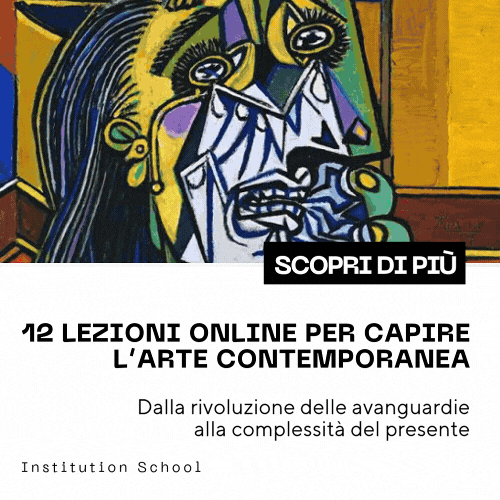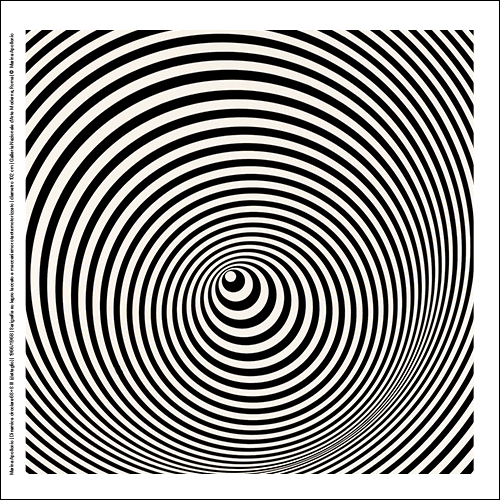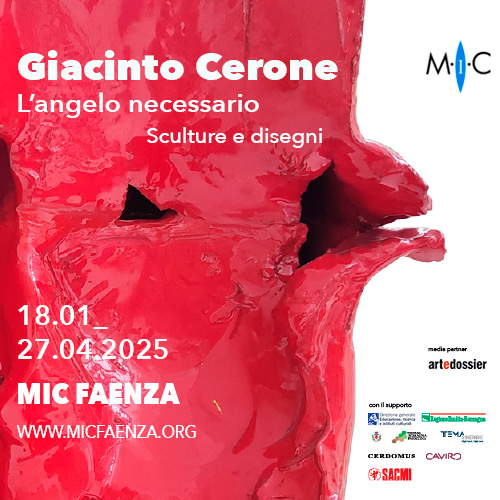Finestre sull'Arte presents a web-series on Perugino, with Jacopo Veneziani
The filming of Pillole di Perugino, the web-series dedicated to Pietro Vannucci known as Perugino (Città della Pieve, c. 1445 - Fontignano, 1523), by the editorial staff of Finestre sull’Arte with the participation of art historian andart historian and popularizer Jacopo Veneziani, a well-known face of television and web popularization (he is the protagonist of the Rai 3 programs Le parole della settimana and Il borgo dei borghi and author of two best-selling art non-fiction books aimed at the general public such as Divulgo and Simmetrie, both published by Rizzoli). Pills of Perugino will be divided into ten episodes produced by Danae Project and dedicated to as many works by the Umbrian artist, during which Veneziani will reveal to the audience news about the works, anecdotes and curious facts, style, importance, news, in a journey that will cross much of Umbria to discover ten masterpieces placed throughout the career of Perugino, whose five hundredth anniversary of his death is being celebrated this year.
The works the public will discover together with Jacopo Veneziani will be theAdoration of the Magi (Perugia, National Gallery of Umbria), the Pietà of the Farneto (Perugia, National Gallery of Umbria), the Madonna of the Confraternity of Consolation (Perugia, National Gallery ofUmbria), the Sala delle Udienze del Collegio del Cambio (Perugia, Collegio del Cambio), the Corciano Altarpiece (Corciano, Santa Maria), St. Romano and St. Rocco (Deruta, Pinacoteca Civica), the Baptism of Christ (Città della Pieve, Cathedral), the Polyptych of St. Augustine (Perugia, National Gallery of Umbria), the Monteripido Altarpiece (Perugia, National Gallery of Umbria), the Trinity and Saints (Perugia, Chapel of San Severo). A transversal itinerary, then, that from Perugia moves into the territory to bring the general public to discover the artist’s most interesting masterpieces, from the most famous ones to some lesser-known works but that express well the soul of one of the most important of the Renaissance, often remembered only as the master of Raphael, but in reality the most sought-after painter of his time, a modern artist, at the head of one of the most active workshops in Italy at the time, capable of perfecting a style that was imitated and taken as a model by so many artists. The ten episodes of the web-series will soon be published on the Finestre Sull’Arte channels, where they can be viewed for free by all.
“Visiting a region by following in the footsteps of an artist who worked there five hundred years earlier allows a peek with today’s gaze into yesterday’s world,” says Jacopo Veneziani. “That’s what happened to me as I moved from village to village in Umbria to chronicle the long career of Pietro Vannucci, the Perugino, one of the greatest painters of the Renaissance. I had the impression of traversing the streets of the ceramic artisans of Deruta, the panoramic terraces of Corciano, the quiet alleys of Città della Pieve and again the bustling streets of downtown Perugia in the company of those who, centuries ago, dialogued with Perugino to bring his art to those places. I have imagined each installment of this web-series as an open window on those distant stories, each painting as a gateway to access the hopes, fears, and aspirations of a time gone by. We will meet a Perugino in his early twenties who, after his formative years in Florence, presents himself to the city of Perugia full of ambition with a painting-curriculum vitae, the hard-working community of Deruta frightened by the plague, the prayers of a group of Franciscan friars isolated in a small convent nestled in an oak forest, the pride of the parish priest and ’mayor’ of Corciano, proud to have raised the money needed to enter into a contract with Vannucci, when he was now considered the most important artist of the moment, the satisfaction felt by the bankers of the Arte del Cambio of Perugia upon discovering the cycle of frescoes in their Sala delle Udienze, and again the sorrow of Perugino when, now an elderly master, he had to complete the fresco of one of his pupils who had died prematurely, Raphael Sanzio.”
"The web-series Pillole di Perugino is our way of paying homage to one of the greatest artists of the Renaissance in the year of the 500th anniversary," says Federico Giannini, editor-in-chief of Finestre sull’Arte. "We imagined an itinerary among Perugino’s works that would be able to move essentially along two directions: on the one hand, to give an account of the artist’s entirecareer , emphasizing the variety of his production, with the aim also of helping to dispel the idea of a boring and repetitive painter that, wrongly, has become fixed in the common imagination. And, again with this in mind, we have tried to build, together with Jacopo Veneziani, a path to present Perugino as an innovative artist, an artist who managed to invent a language capable of spreading widely from the north to the south of the peninsula. On the other, we wanted to show works spread throughout the territory, and not only inside museums: in fact, the series will also focus on works that have remained in the places for which they were painted, to invite the public to visit the whole territory, to move along villages and valleys to discover Perugino everywhere, throughout the region, where the best of his art is still preserved. Without claiming to be exhaustive, of course: Pillole di Perugino is a project conceived in the full spirit of the initiatives of Finestre sull’Arte and is therefore meant to be a starting point and not an arrival point."
Pills of Perugino is a project that is part of the initiatives for the popularization and dissemination of knowledge about the figure and work of Perugino selected by the Promoting Committee of the celebrations for the fifth centenary of the death of the painter Pietro Vannucci known as "il Perugino," established in 2022 by the Ministry of Culture. The project, curated by the editorial staff of Finestre sull’Arte, with the participation of Jacopo Veneziani, video of Danae Project, is co-financed with funds made available to the Committee by the Ministry.
Below are some backstage images.
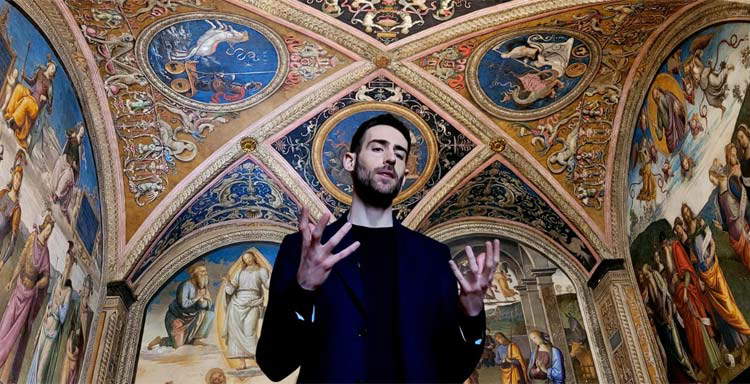
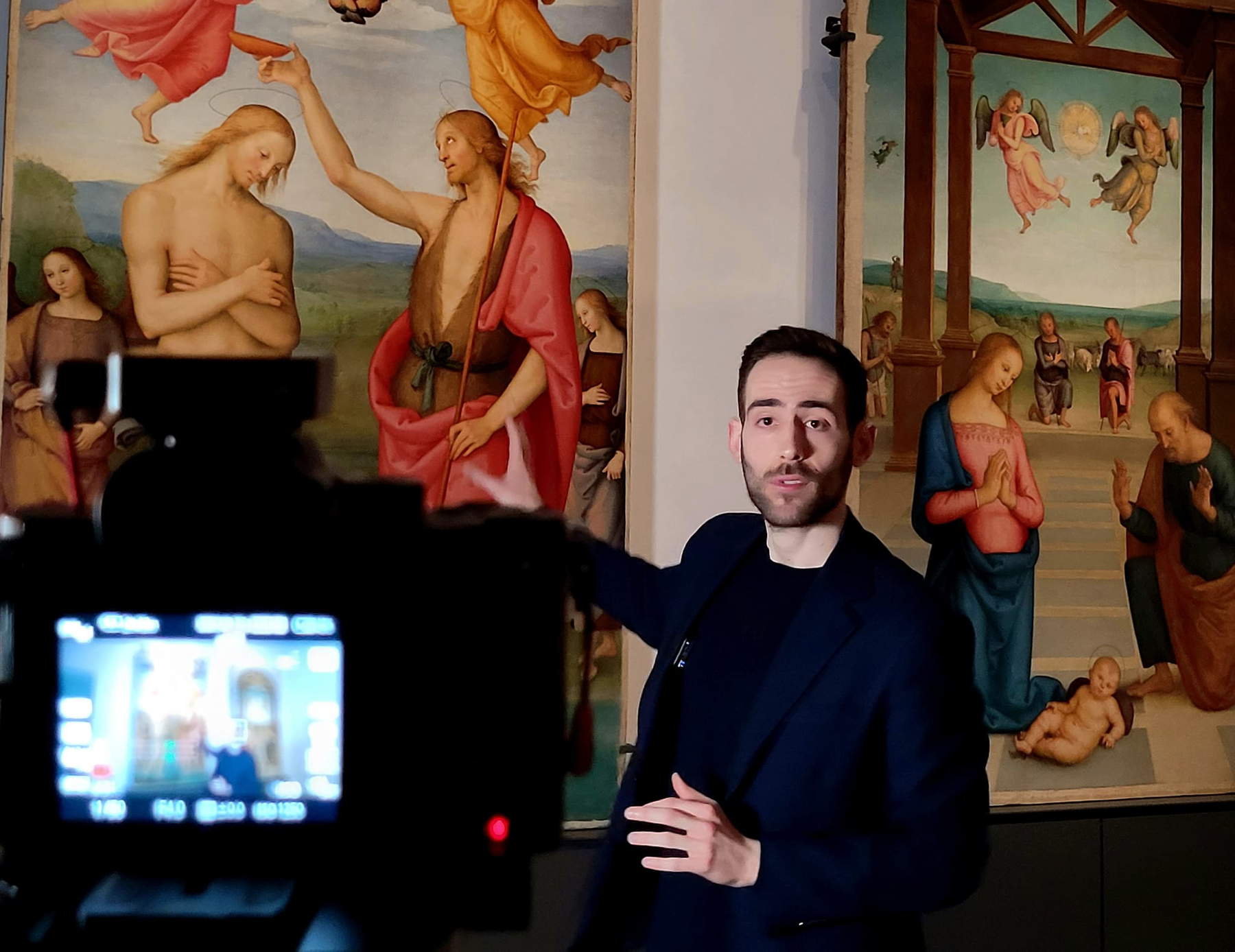
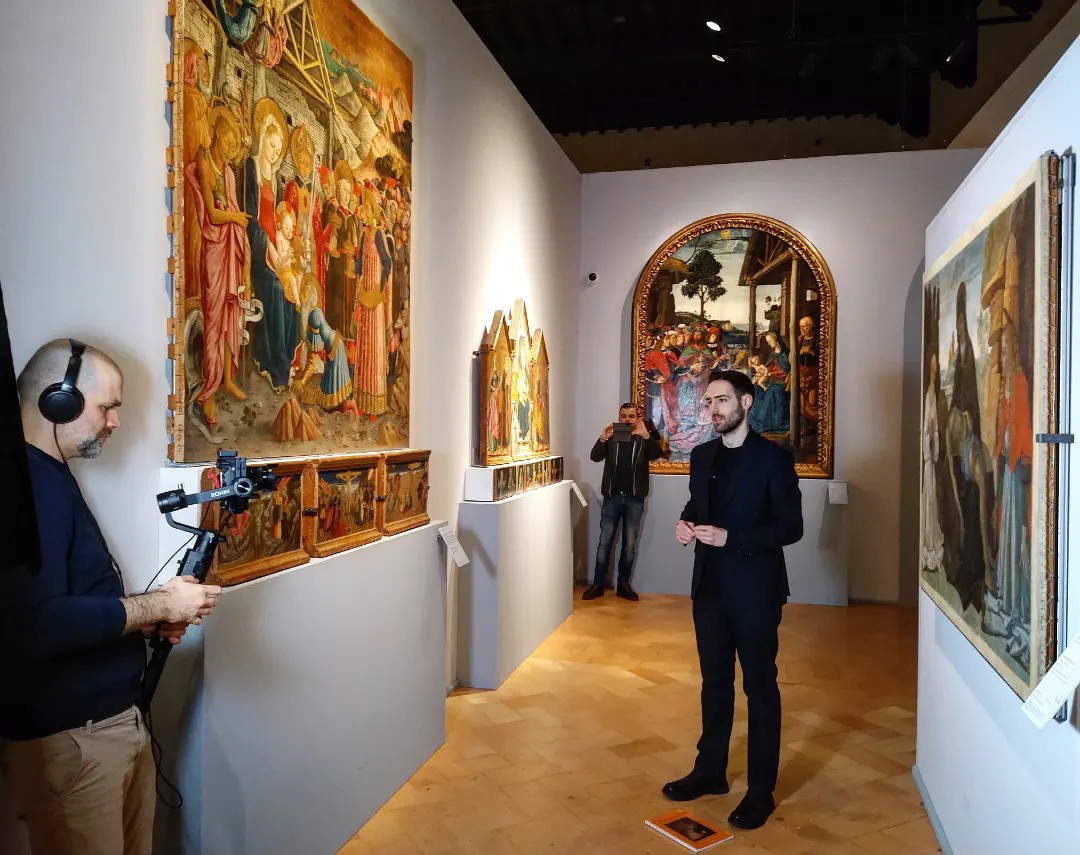
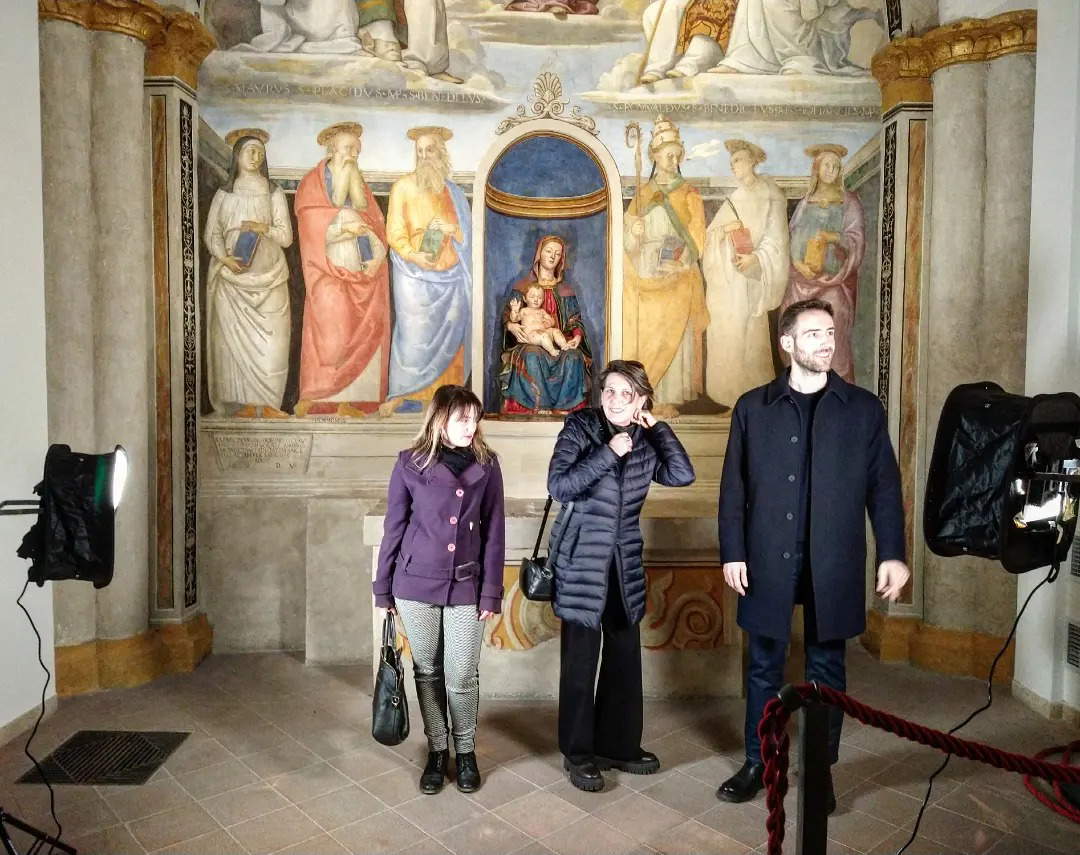
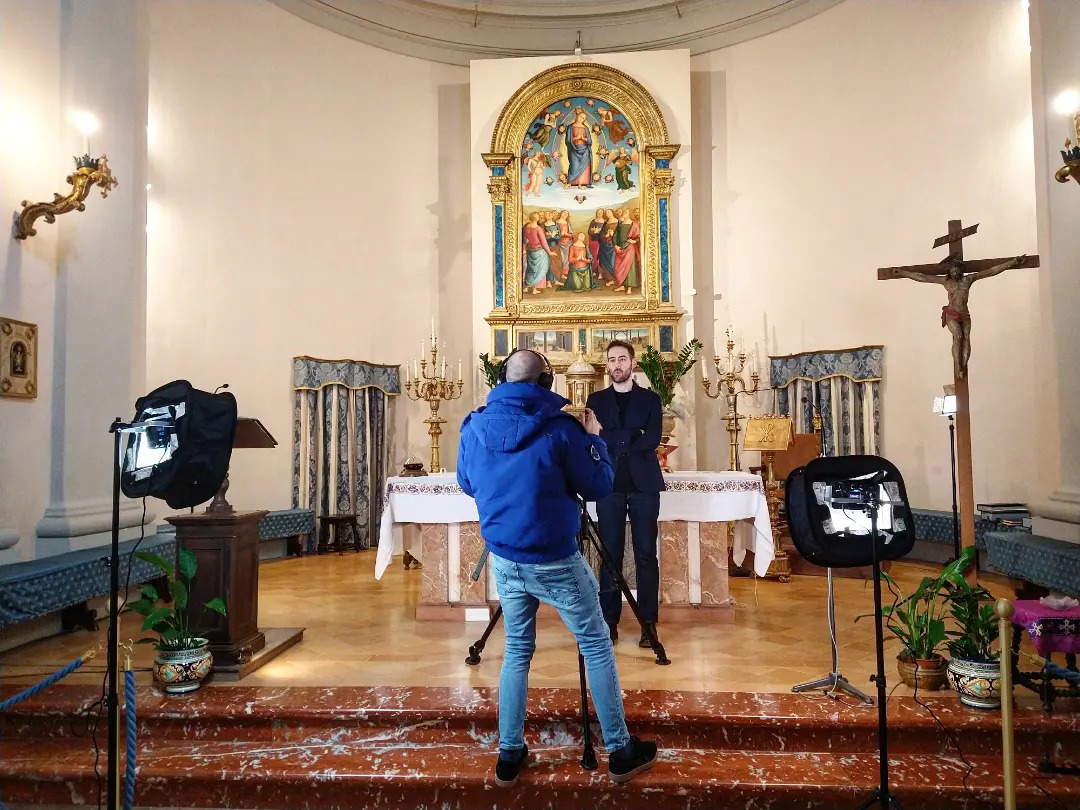 Perugino
Perugino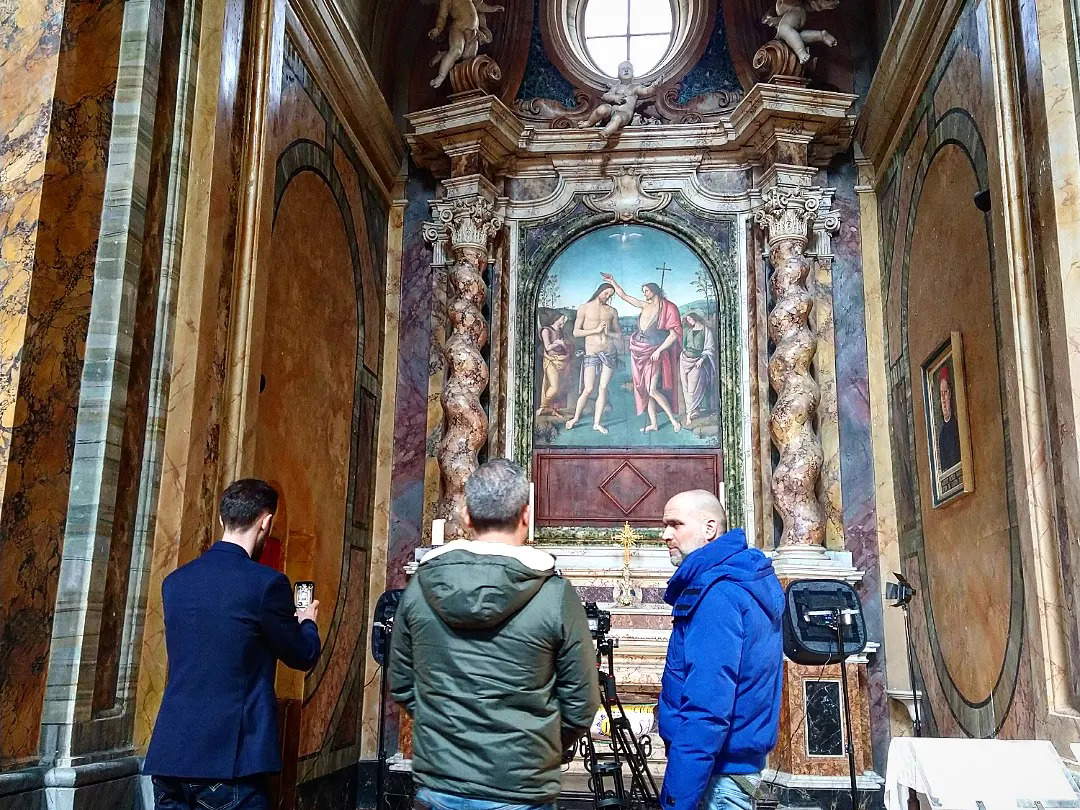
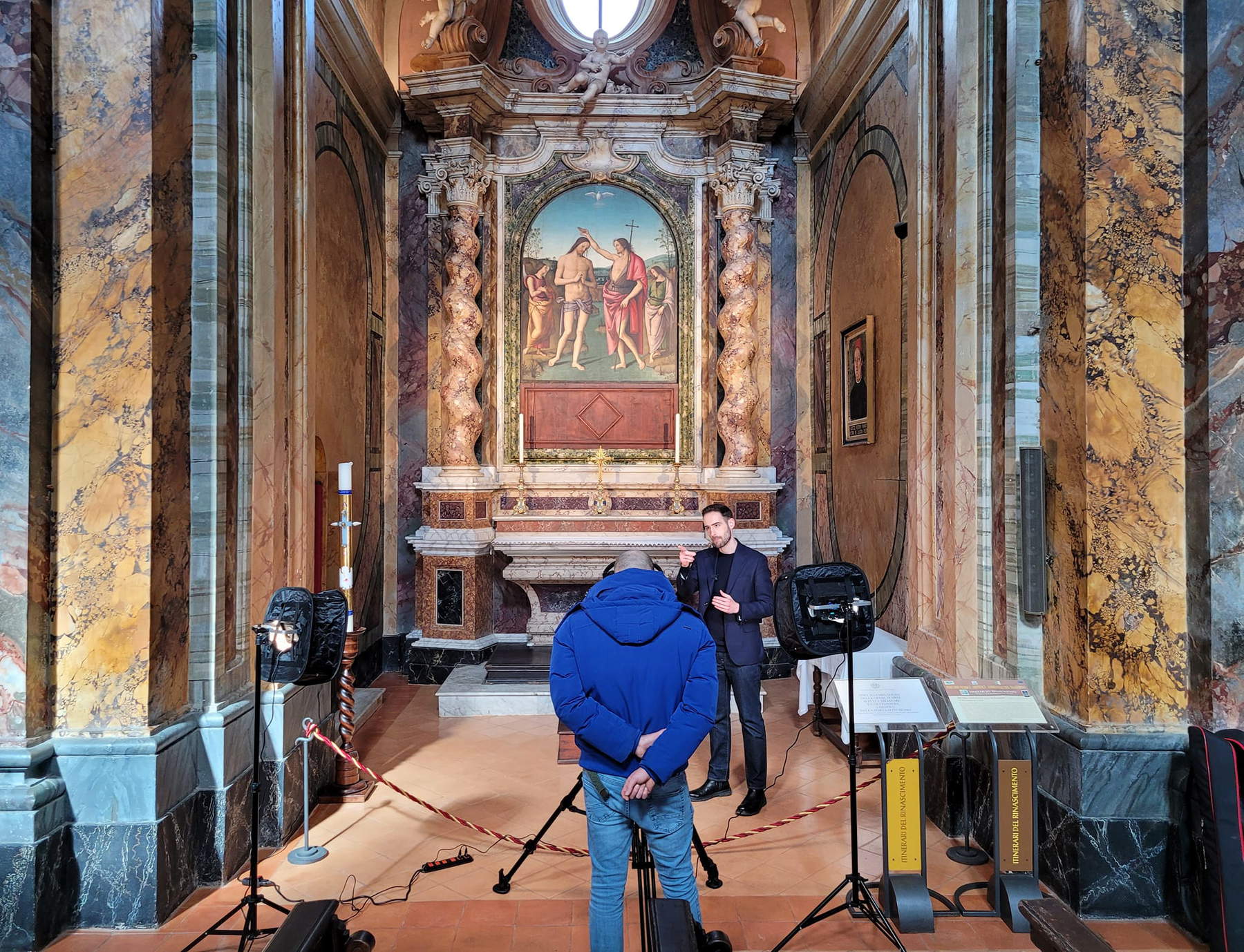
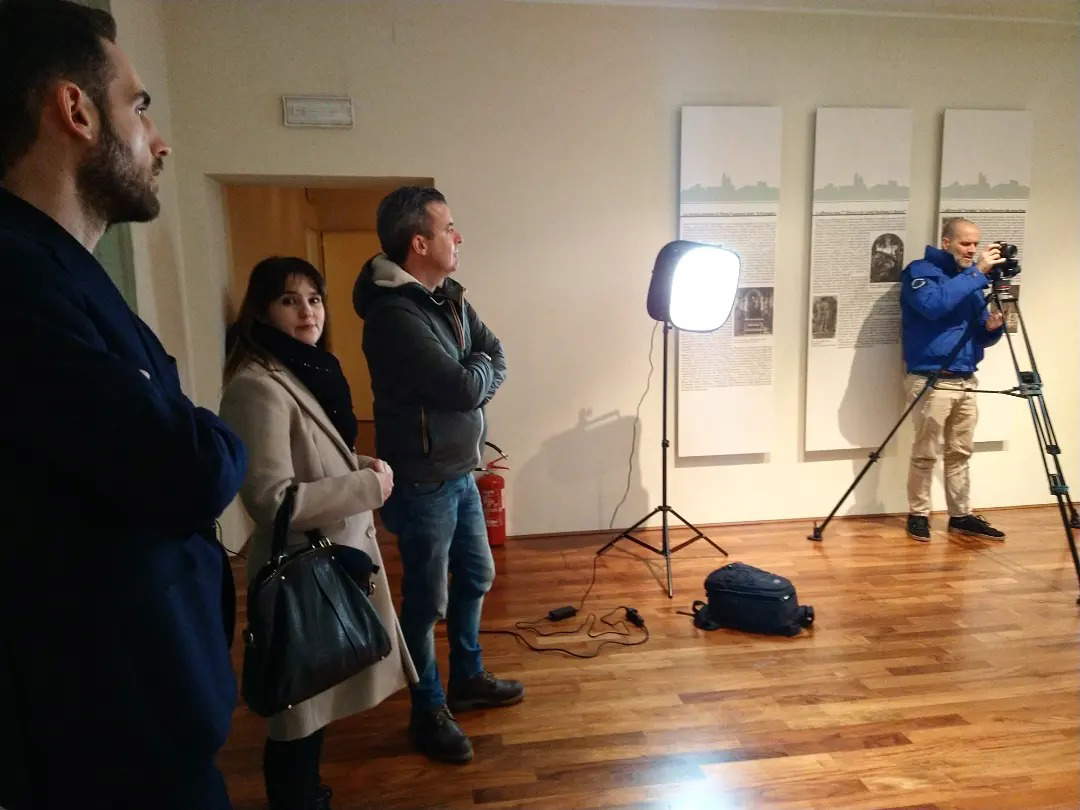
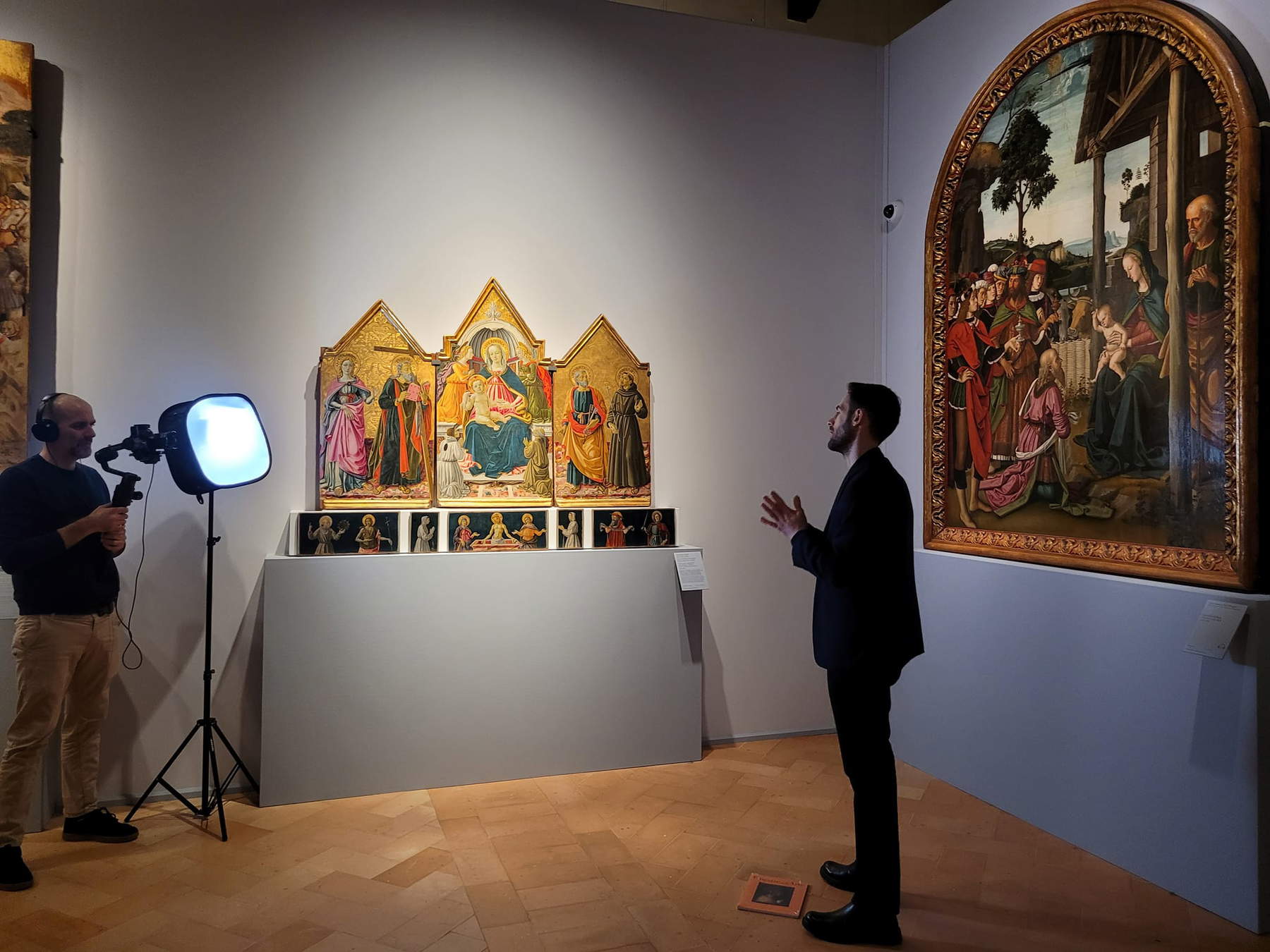
Warning: the translation into English of the original Italian article was created using automatic tools. We undertake to review all articles, but we do not guarantee the total absence of inaccuracies in the translation due to the program. You can find the original by clicking on the ITA button. If you find any mistake,please contact us.






